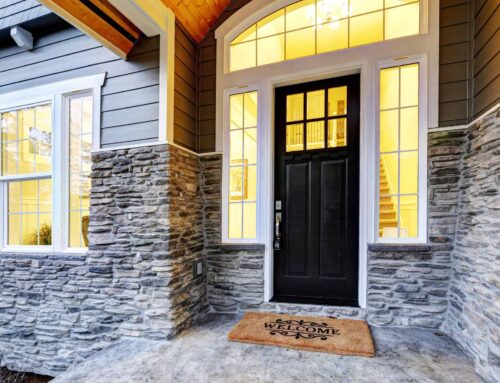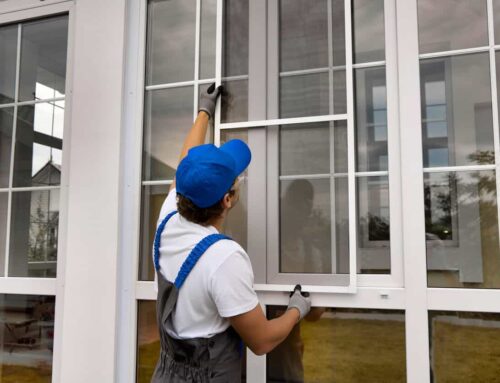ENERGY STAR is a joint program of the U.S. Environmental Protection Agency and the U.S. Department of Energy helping us all save money and protect the environment through energy efficient products and practices. Results are already adding up. Americans, with the help of ENERGY STAR, saved enough energy in 2008 alone to avoid greenhouse gas emissions equivalent to those from 29 million cars — all while saving $19 billion on their utility bills.
Contents
Contents
For the Home
Energy efficient choices can save families about a third on their energy bill with similar savings of greenhouse gas emissions, without sacrificing features, style or comfort. ENERGY STAR helps you make the energy efficient choice.
If looking for new household products, look for ones that have earned the ENERGY STAR label. They meet strict energy efficiency guidelines set by the EPA and US Department of Energy.
If looking for a new home, look for one that has earned the ENERGY STAR label.
If looking to make larger improvements to your home, EPA offers tools and resources to help you plan and undertake projects to reduce your energy bills, improve home comfort and help to protect the environment.
Improving energy efficiency is also an important first step for homeowners interested in green remodeling.
ENERGY STAR can guide you in making your home more efficient — whether you do-it-yourself or hire a qualified professional.
Common Home Problems and Solutions
Is your home cold, drafty, or uncomfortable? Do you have high energy bills? Ice dams? Hot or cold rooms? Here are some improvements you or a qualified professional can make to your home to solve these problems.
High Energy Bills Diagnosis:
One reason for high energy bills is an increase in the price of electricity or heating fuel. However, it is common to trace high energy bills to an in-efficient component (windows, heating and cooling equipment, ducts insulation) of your home or a failure of one of these components to perform as intended. It is not always easy to pin-point the problem, but fixing it can make your home more energy-efficient and comfortable.
Prescription Checklist:
To improve the energy efficiency of your home start with an evaluation of your homes energy use. To get started today use our Home Improvement Tool, Home Energy Yardstick to score your home’s energy use and generate a customized list of improvement.
For best results in your home hire a contractor who is an energy specialist to do an in-home evaluation. A good specialist will use diagnostic equipment to evaluate the performance of your home and generate a customized list of improvements.
Improvements may include sealing air leaks, especially around patio doors, adding insulation or sealing duct air leaks. Some of these you can do yourself, but you may prefer to hire a contractor.
You can turn down the temperature on your water heater to 120 degrees F.
Replace highest usage incandescent lights with ENERGY STAR CFL bulbs. When replacing other light bulbs and appliances look for those with the ENERGY STAR.
Install an ENERGY STAR qualified programmable thermostat, and use it to save energy while you are away at work.
Contact your utility and ask if they offer any programs to help lower energy bills.
Ice Dams Diagnosis:
Ice dams usually occur after a heavy snowfall and several days of freezing temperatures. Warm air inside your home leaks into the attic and will warm the underside of the roof causing snow and ice on the roof to melt. The melted water will drain along the roof, under the snow, until it reaches the cold overhang. The overhang tends to be at the same temperature as the outdoors and the melted water will refreeze and form an ice dam and icicles. The ice dam can cause damage to the roof, which will result in water leaks to the inside. Frequently the result will be a water spot on the ceiling under the roof damage.
Prescription Checklist:
Don’t get on your roof to solve this problem, it could be dangerous.
Avoid standing on the ground and “chipping away” at the ice. Not only could this cause damage to your roof, but you can be seriously injured by falling ice, debris, or tools.
Contacting a roofing contractor to fix your roof leak will not prevent future ice dams.
Seal air leaks and duct air leaks in your attic to stop warm air leakage (the source of the problem).
After sealing leaks, add additional insulation in your attic.
Provide adequate attic ventilation so that the undersides of the roof and outside air are at the same temperature. Check to make sure attic insulation is not blocking roof ventilation.
Clean leaves and other debris from gutters before the first snow. This will help prevent ice build-up in gutters.
Hire a contractor who is an energy specialist or specializes in air sealing to do an in-home evaluation. A good specialist will use diagnostic equipment to evaluate the performance of your home and generate a customized list of improvements.
Hot or Cold Room Diagnosis:
Temperature differences of up to three degrees from room to room are not uncommon, but often one or several rooms are uncomfortably warm or cold. This condition could be caused by several factors within your home including inadequate insulation, air leakage, poor duct system design, duct leakage, unwanted heating by the sun in warmer months, or a failure in part of your heating and cooling system.
Check out the ENERGY STAR HVAC Quiz to test your knowledge on heating and cooling systems.
Common problem rooms include:
Attic
Room over a garage
Basement
Additions
Prescription Checklist:
For best results hire a contractor who is an energy specialist to do an in-home evaluation. A good specialist will use diagnostic equipment to evaluate the performance of your home and generate a customized list of improvements.
Ask your contractor to check if your heating and cooling system is operating correctly.
Ask your contractor to check your ducts for air leakage and proper distribution of air.
Seal air leaks and add insulation.
If the sun is making rooms to hot, consider shades or solar screening.
After trying these items, consider ENERGY STAR labeled ceiling fans to make room air circulation more uniform. You will need to hire an electrician to install it.
More Home Improvement Tips
These are just a few of the tips and resources available on the ENERGY STAR website.
Remember, following these tips can improve your homes energy efficiency while making it more comfortable, saving you money on utility bills and helping you protect the environment!






